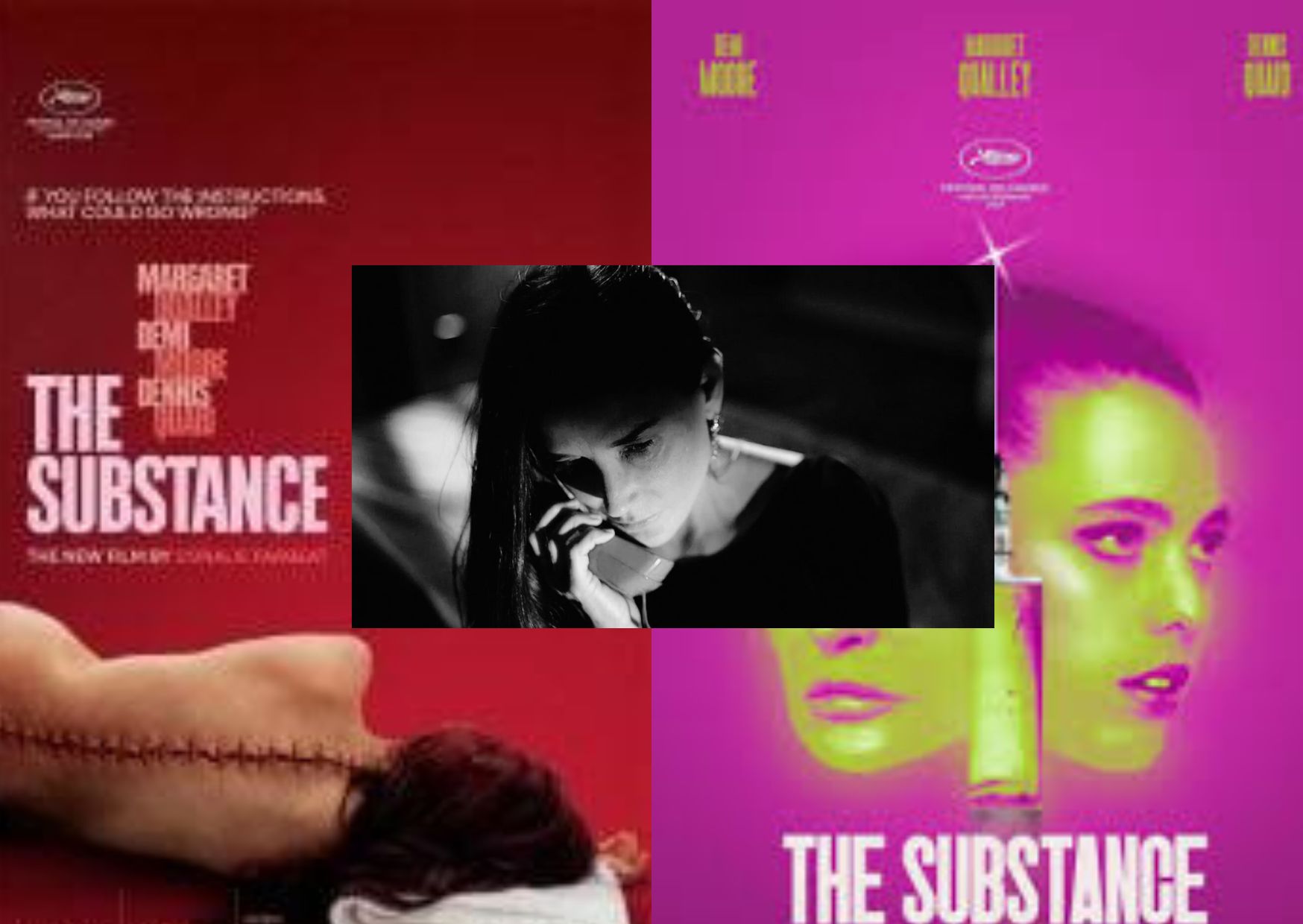4.5/5 stars
Horror cinema hasn’t felt this urgent and impactful all year.
For a genre that relies on the gory and grotesque, the beating heart inside body horror films is their examination of social and physiological aspects of the human condition. Underneath the buckets of fake blood and prosthetic guts, filmmaker Coralie Fargeat uses her latest film The Substance as a sledgehammer to shatter beauty standards around aging. It’s ferocious and brutal, with a commitment to leaving a mark on audiences.
The film follows aging aerobics star Elisabeth Sparkle (Demi Moore) who is laid off by the network manager (Dennis Quaid) on her 50th birthday. Left distraught, Elisabeth is selected as a candidate for a black-market drug known simply as “The Substance.” A single injection begins the process of cellular division, creating a younger clone of the subject. This gives birth to Elisabeth’s younger self, whom she calls “Sue” (Margaret Qualley) and uses her to reclaim her position in the spotlight.
Both versions alternate weeks spent awake, the inactive one staying in a coma-like state while the other roams about. The mysterious drug comes with a few conditions: neither version of the subject shall extend their seven-day period and the user must remember that both versions are not independent from the other.
It’s impossible to review this film without talking about Moore’s performance. Taking on a role this ambitious requires courage and heart; her commitment to conveying Elisabeth’s spiralling dysphoria is apparent in every scene she’s in. It’s common for excellent horror performances to be snubbed by award shows — look no further than Toni Collette in Hereditary — but Moore’s bravery and acting here are worthy of acclaim beyond the genre.
It would be a wildly missed opportunity to ignore the impressive prosthetics, makeup and practical effects used in this film as well. All things mentioned are used creatively in a grisly way that feels camp in their extremity but purposeful for the story’s intention, harkening back to over-the-top practical effects of ‘80s horror.
The secret behind the film’s hypnotic rhythm lies in Fargeat’s direction. In most cases, the sequencing of a film is left to the rigour of the editor, though that feels absent here. Fargeat lets the camera linger on the various settings to construct an uncanny Los Angeles, and one that never quite leaves the realm of satire. The wide-angle lenses are used at uncomfortably close and far distances to heighten the unreal, dreamlike environments.
Fargeat’s worldbuilding is comparable to that of David Cronenberg or David Lynch, abandoning logic to establish an uneasy setting. There are various shots of long hallways in Elisabeth’s home and filming studio, often accompanied by faded and scratchy jazz music.
Several long scenes are set in Elisabeth’s monochromatic white, windowless bathroom, intentionally meant to evoke discomfort and claustrophobia. The fluorescent lights and floor-to-ceiling tiles create the laboratory of her own torment. It’s never romanticized or subtle, and Moore’s devastating performance makes every ache strike home.
The film cuts right to the meat of the story even with a lengthy runtime of over two hours, wasting no time evoking a sense of peril from the drug’s side effects. Questions around how the drug will impact Elisabeth’s daily life are quickly answered by the uncomfortable situations she soon ends up in. For instance, her younger self goes on a date on the final evening of her seven days, risking going over the time limit.
Aside from the ample amounts of mutilation and body horror throughout the film, there are also numerous striking scenes that emphasize Elisabeth’s sadness from Moore’s acting alone. The benefits of her younger self building a life quickly become additional factors in her shame leading her to treat both bodies as separate from the same consciousness. Her psychological conflict is an unsubtle but intentional representation of the ways we alter our bodies, which begs the question: To what extent are we changing for ourselves and changing for the other? Where is the line drawn?
Thankfully, there is an abundance of absurdist comedy throughout the film to ease the break-neck pace of the violence. It’s the brand of comedy where you aren’t sure if laughter is appropriate, but the relentless insanity that ensues in the third act is an unspoken reminder to just go with it.
It’s unfortunate to see recent horror films not garner much cinematic acclaim. Perhaps there is still a bias to the genre, with audiences still seeing it as kitschy, midnight cinema. Fargeat has taken the midnight formula and blown it up, aiming for the jugular with this film’s aggressive, confrontational approach to horror as a call for change.
The shocking, brave filmmaking behind The Substance is a massive stride in dismantling Hollywood’s plastic veneer of beauty standards. It’s a bloodcurdling scream that demands to be heard.

